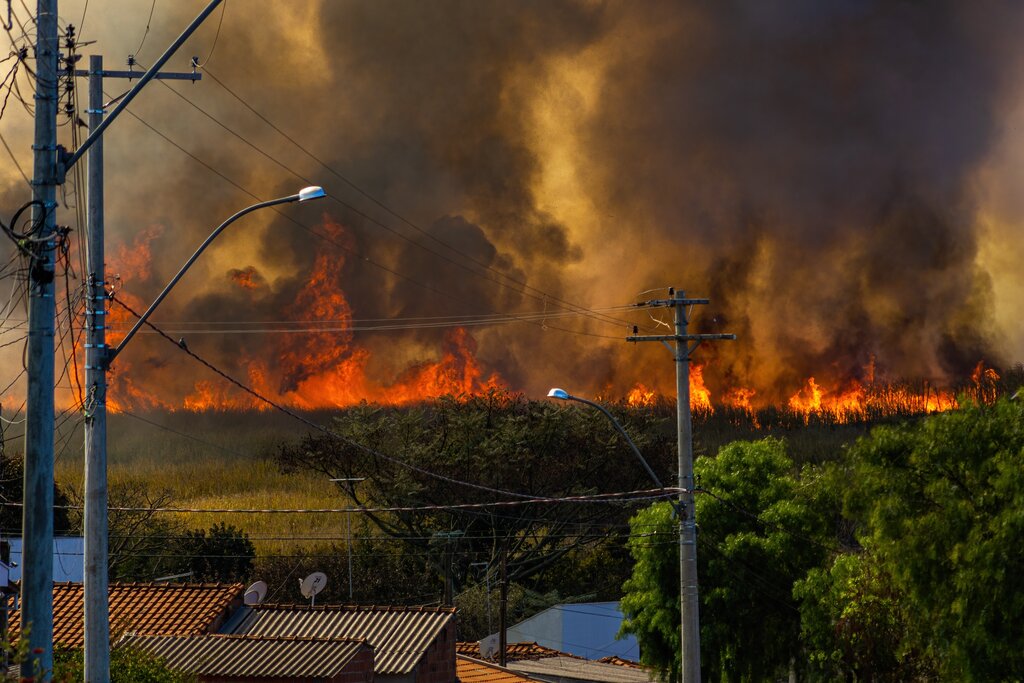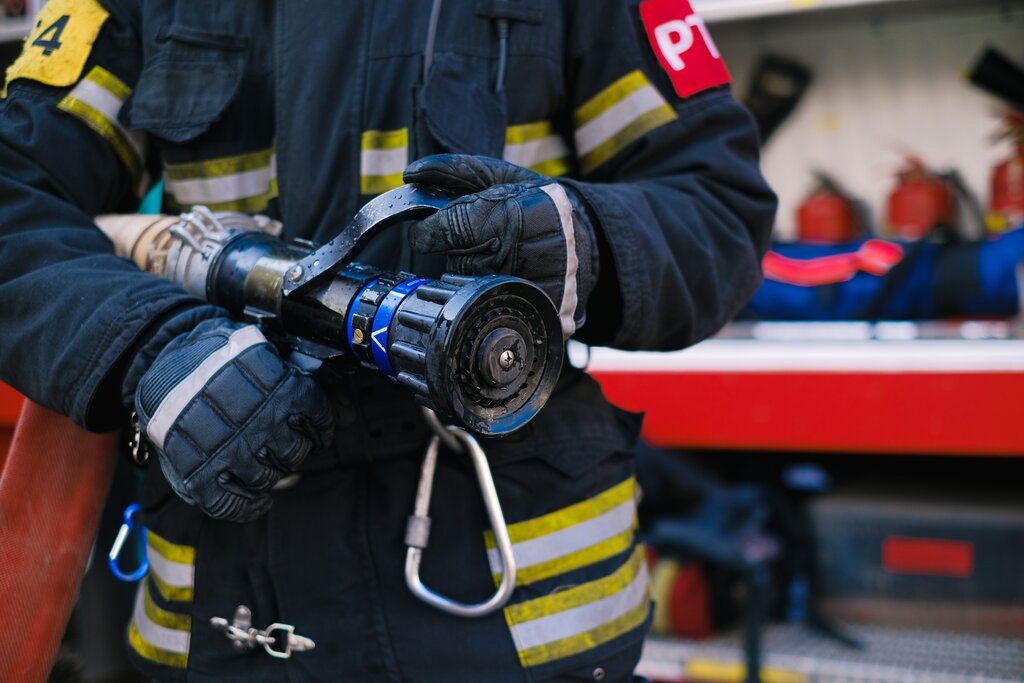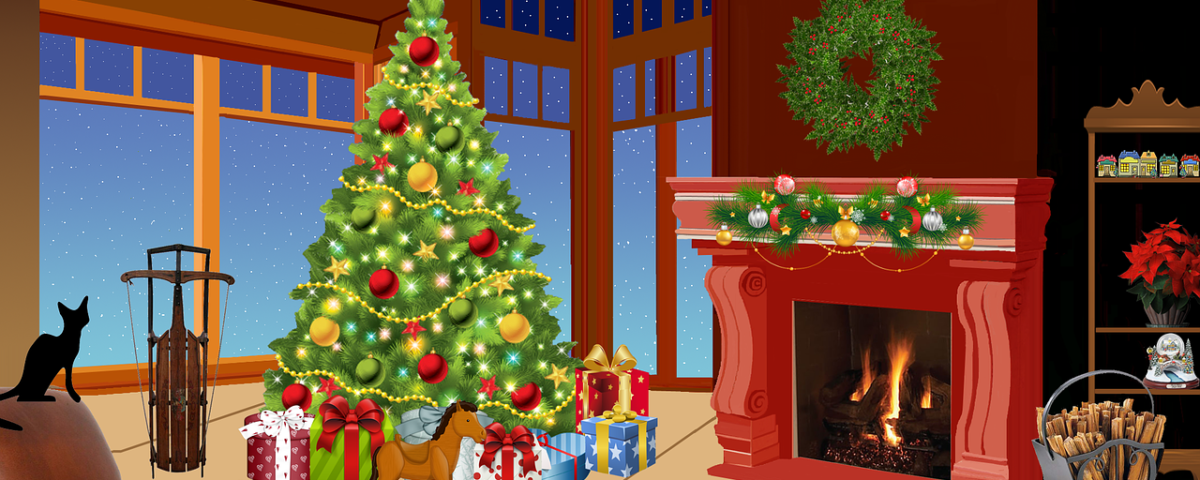
Holiday Fire Safety Can Avert a Disaster
“I am absolutely traumatized and still can’t believe what has happened. My children ask me, ‘Will Santa still visit us?’ and it breaks my heart.”
Just days after decorating their natural Christmas tree with glittering baubles and lights, Nicole Jackson was awakened by the family dog. When she went downstairs to investigate, she was engulfed by smoke and saw flames billowing from her living room. The six-foot Christmas tree had caught on fire.
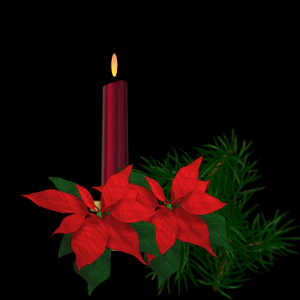
The mother of two ran upstairs to rescue her daughters before escaping outside. Realizing that her husband had nodded off on the sofa, she ran back in and was able to drag him out.
Although no one was injured in the blaze, the family was left homeless over the Christmas holiday.
Holiday Fire Safety
Fire safety is more important during the holiday season than at any other time of the year. This is when house fires are the most frequent, costly and deadly.
In fact, the U.S. Fire Administration reports that the number of open-flame fires on Christmas Day is more than double the average, and New Year’s Day runs a close second. Even worse, holiday fire fatalities are nearly 70% higher than average, and property loss is 34% greater.
Deadly Christmas Tree Fires
Did you know that Christmas tree fires are more deadly than other house fires?
That’s because of the tremendous heat energy emitted by a blazing tree within an enclosed space, which can cause flashover. (You know how highly flammable turpentine is? Well, it’s made from pine trees.)
The following video clip demonstrates just how quickly a dry Christmas tree can become a flaming torch:
Fire Safety Tips for Christmas Trees

Start with the freshest tree possible. Many of the trees available from standard retailers were cut weeks earlier. So you’re better off choosing a reputable nursery or cutting your own tree. (If using an artificial tree, make sure it’s flame-retardant.)

Watering is critical! A freshly cut tree can consume a gallon of water in 24 hours. Never let the water level in your tree stand dip below the tree’s base; keep it filled. As a general rule, your stand should provide one quart of water per inch of stem diameter.
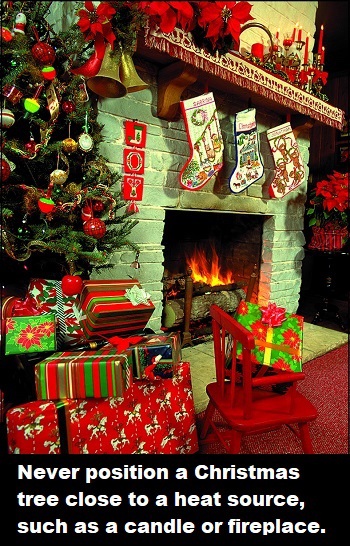

Always position your Christmas tree away from heating ducts, fireplaces, or other heat sources.

Use only approved lights and connect them properly. Choose lights tested by a nationally recognized testing laboratory, such as Underwriters Laboratories (UL). Avoid connecting multiple extension cords and more than three strands of lights.

Toss damaged lights and decorations. Don’t attempt to repair light strings if they’re worn, frayed or show other problems. Instead, discard them and buy a new set of lights.

Avoid using candles near the tree. In one-fourth of Christmas tree fires measured by the National Fire Protection Association, a candle or other heat source was too close to the tree.

Avoid using combustible ornaments. Pine cones and other flammable decorations can add fuel to a Christmas tree fire and should be avoided.

Unplug your Christmas tree every night. Never leave it plugged in when you are away from home or asleep.
How to Keep the Home Fires Burning…Safely
The use of open flames during the holidays pose another major fire risk.
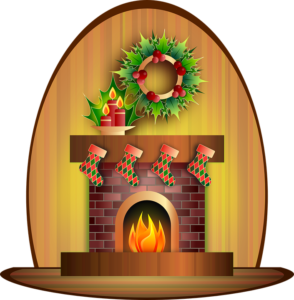
Holiday Fire Facts
- One of every three home Christmas tree fires is caused by electrical problems.
- Christmas tree fires are more likely to be serious, resulting in death once in every 31 occurrences (compared to an average of one death per 144 total reported home fires).
- A heat source too close to the tree causes 25% of all Christmas tree fires.
- December is the peak time of year for home candle fires.
- One-third of all candle fires start in the bedroom.
Source: FEMA
Candles and Cooking
Just like at other times of the year, a holiday fire will usually start in the kitchen. But during the holidays, it’s even easier for the cook to become distracted by everything that’s going on.
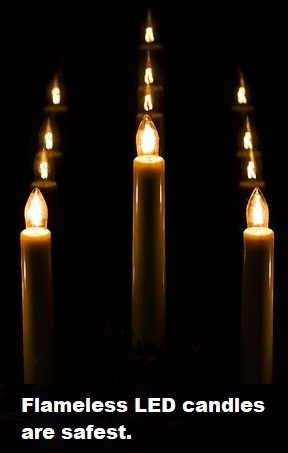
Unattended food is the most common culprit. Try taking a pot holder with you whenever you leave the kitchen, as a reminder that you’ve still got something cooking.
Keep a kitchen fire extinguisher handy, and make sure all smoke detectors are working properly.
Candle fires are four times more likely to occur in December than any other month. You can reduce the risk by maintaining a distance of about three feet between the lit candle and anything flammable.
Make sure candles are set on sturdy bases or, better still, cover them with hurricane globes. NEVER leave a lit candle unattended.
If you want ambiance without the danger of open flame, consider flameless LED candles.
Outdoor Holiday Lighting
When hanging lights outside, be sure to use UL-rated clips or hangers. Nails or staples can damage the wiring and increase the risk of a fire.
Finally, resist the temptation to leave your lights up all year round. They can be chewed by squirrels and damaged by weather. Which is why safety experts recommend outdoor lights be taken down within 90 days.

Sources:
Featured Image: Pixabay
National Fire Protection Association

